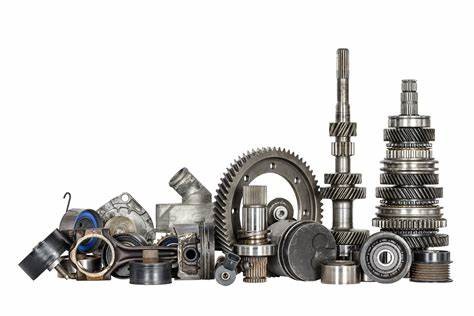Introduction
Spare Parts Compatibility ensuring optimal performance of cooling equipment highlights the importance of using the right components to maintain seamless operations, prevent system failures, and extend the equipment’s lifespan. By addressing key compatibility factors, businesses can safeguard their cooling systems against inefficiencies, costly downtime, and safety risks while ensuring peak performance in demanding applications. Cooling equipment, such as chillers, HVAC systems, and cooling towers, plays a critical role in maintaining operational efficiency across industries. However, the performance and reliability of these systems heavily depend on the quality and compatibility of their spare parts. Spare parts are critical components in maintaining the efficiency, reliability, and longevity of cooling equipment such as chillers, cooling towers, and HVAC systems.
Importance of Spare Parts Compatibility
Operational Efficiency:
Cooling equipment relies on precise interactions between components to function efficiently. Using compatible spare parts ensures that the system operates seamlessly, avoiding issues like energy waste due to mismatched flow rates or improper fit. For example, an incompatible fan blade might cause airflow inefficiency, leading to reduced cooling performance and increased energy costs.
System Reliability:
Spare parts designed for specific equipment are better suited to handle the system’s operational demands. Compatibility ensures smooth integration, reducing the likelihood of mechanical issues, such as misalignments or vibrations. Reliable systems experience fewer breakdowns, improving uptime and operational stability.
Extended Equipment Lifespan:
Compatible spare parts reduce stress on other components, preventing accelerated wear and tear. For instance, using a pump with the right flow rate prevents undue pressure on valves and piping, extending the lifespan of the entire system.
Cost Savings:
While non-compatible parts might be cheaper initially, they can lead to costly failures or frequent replacements. Investing in high-quality, compatible parts ensures fewer breakdowns and lower maintenance expenses over time, offering significant cost savings.
Safety Assurance:
Cooling equipment often operates under high pressure or temperature conditions. Incompatible spare parts can create hazardous situations, such as leaks or overheating. Ensuring compatibility guarantees safety compliance and minimizes risks to personnel and equipment.
Key Factors to Ensure Spare Parts Compatibility
Original Equipment Manufacturer (OEM) Parts:
OEM parts are specifically engineered for the equipment, ensuring a perfect fit and adherence to the manufacturer’s performance standards. They are also backed by warranties and technical support, offering peace of mind and reliability.
Specifications Match:
It’s vital to match spare parts’ technical specifications with the system’s requirements. For example, heat exchanger tubes must meet the correct material and dimension specifications to handle the system’s thermal and mechanical stresses.
Compatibility Testing:
Advanced systems may require compatibility testing before installation. For instance, in data center cooling, testing ensures that electronic components, such as sensors and control boards, work seamlessly with the existing infrastructure.
Equipment Model and Serial Number:
Using the equipment’s unique model and serial number allows precise identification of compatible parts, avoiding confusion and ensuring accuracy during replacement.
Vendor or Supplier Expertise:
Reputable suppliers provide detailed guidance on choosing the correct spare parts. They may offer alternatives that meet or exceed OEM standards, ensuring compatibility without compromising quality.
Common Cooling Equipment Spare Parts and Their Compatibility Considerations
Motors and Fans:
The motor’s power rating and the fan’s blade size must align with the system’s airflow requirements. An oversized fan may cause overloading, while an undersized one may fail to deliver adequate cooling.
Heat Exchanger Tubes:
Tubes made from recommended materials, such as stainless steel or titanium, prevent issues like corrosion or thermal stress, which could compromise heat transfer efficiency.
Valves and Pumps:
These components must match the system’s flow rate, pressure limits, and chemical compatibility. Incorrect valves or pumps can lead to leaks, pressure imbalances, or operational inefficiencies.
Drift Eliminators and Fill Media (Cooling Towers):
These components must be resistant to chemical degradation and withstand thermal conditions. They should also match the cooling tower’s design specifications for optimal water flow and evaporation rates.
Control Panels and Sensors:
Electronic components need to be compatible with the system’s operating software and electrical configurations. Proper integration ensures accurate monitoring and control of temperature, pressure, and other critical parameters.
Consequences of Using Incompatible Spare Parts
Decreased Efficiency:
Incompatible parts disrupt the system’s design parameters, leading to inefficiencies. For instance, a mismatched pump may result in poor circulation, compromising cooling capacity and increasing energy consumption.
System Damage:
Using incorrect parts can cause mechanical failures, such as misalignments or excessive wear. For example, an oversized motor might strain bearings, leading to premature failure.
Increased Downtime:
Equipment breakdowns caused by incompatible parts result in production delays and lost revenue. Frequent downtime also impacts customer satisfaction and operational schedules.
Warranty Voids:
Many manufacturers void warranties if non-compatible spare parts are used. This leaves the user responsible for repair costs, even for defects not caused by the spare part.
Higher Maintenance Costs:
The frequent need for replacements and repairs due to incompatible parts drives up maintenance expenses. This can strain operational budgets and reduce profitability.
Conclusion
Ensuring spare parts compatibility is an essential practice for maintaining the optimal performance, safety, and longevity of cooling equipment. By selecting OEM parts, adhering to equipment specifications, and consulting experts, businesses can avoid the pitfalls of incompatible components. Properly matched spare parts not only enhance efficiency and reliability but also reduce costs and risks associated with maintenance and downtime. In an era where operational efficiency and sustainability are critical, prioritizing spare parts compatibility is a smart investment in the long-term health of industrial cooling systems.

